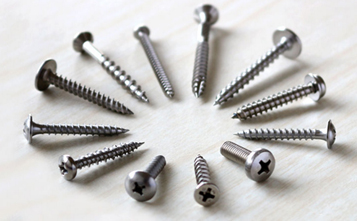The difference between the new standard and the old sta […]
The difference between the new standard and the old standard is that the M8, M10, M12, M14, and M22 series products differ in the width of the opposite sides. Except for the new products of the M22 series, the opposite sides of the heads of the new standard products M8, M10, M12, and M14 are 1MM smaller than the opposite sides of the old standard. Respectively 13, 16, 18, 21MM, and the new products of the M22 series, the new standard is 2MM larger than the opposite side of the old standard, so special attention should be paid. For the thickness of the head, there is a slight difference between the new standard and the old standard, and it can be used in general if the requirements are not very strict.
The difference between the new standard and the German standard is that the product specifications of M10, M12, M14, and M22 differ in the width of opposite sides. The new heads of M10, M12, and M14 are 1MM smaller than the German standard. For the new product of M22, the width of the opposite side of the head is 2mm larger than the opposite side of the German standard. Others can be used universally.
For hexagonal nuts, commonly used standards are: GB52, GB6170, GB6172 and DIN934. The main differences between them are: GB6170 is thicker than GB52, GB6172 and DIN934, commonly known as thick nuts. The other is the difference between the opposite sides. In the M8 nut series, the opposite sides of DIN934, GB6170, and GB6172 are 13MM which is 1MM smaller than the 14MM of GB52. For the M10 nut, the opposite side of DIN934 and GB52 is 17MM. The opposite side of GB6170 and GB6172 is 1MM larger. For M12 nuts, the opposite side of DIN934 and GB52 is 19MM than the opposite side of GB6170 and GB6172 18MM is 1MM larger. For M14 nuts, the opposite side of DIN934 and GB52 is 22MM, which is 1MM larger than the opposite side of GB6170 and GB6172, 21MM. The other is the M22 nut. The opposite side of DIN934 and GB52 is 32MM, which is 2MM smaller than the 34MM opposite of GB6170 and GB6172. (GB6170 and GB6172 have the same width on opposite sides except for their different thicknesses.) The other specifications can be used universally without considering the thickness.
Metric thread is based on MM (millimeter), and its cusp angle is 60 degrees. Both American and British threads are measured in inches. The cusp angle of American threads is also 60 degrees, while the cusp angle of British threads is 55 degrees. Due to the different measurement units, the representation methods of various threads are different. For example, M16-2X60 represents a metric thread. His specific meaning is that the nominal diameter of the screw is 16MM, the pitch is 2MM, and the length is 60MM. Another example: 1/4-20X3/4 means inch threads, and his specific meaning is the nominal diameter of the screw It is 1/4 inch (one inch = 25.4MM), there are 20 teeth on one inch, and the length is 3/4 inch. In addition, to indicate American screws, UNC and UNF are usually added after the British screws to distinguish between American coarse threads and American fine threads.
In the usual domestic sales business, the most commonly encountered standards are GB (National Standard) and DIN (German Standard).
In terms of non-standard products, the following standards are mainly encountered: GB30; GB5783; GB5782; GB52; GB6170; GB818; GB819; GB845; GB846; GB70; DIN912; DIN933; DIN931, etc. At present, GB30 (old national standard) has been replaced by GB5783 (new national standard) in the standard book. GB52 (old national standard) has been replaced by GB6170 (new national standard) in the standard book
In 1986, our country formulated a new standard for standard parts, which is generally called the new standard in business. The most used ones are mainly GB5780, GB5781, GB5782, GB5783, and GB5784. GB5780 is a hexagonal head thick shank half-thread screw, and its accuracy grade is C grade. GB5782 can be used instead (GB5782 is a hexagonal head thick shank full-thread screw, and its accuracy is grade A and B.) GB5781 is a hexagonal head full Thread screws, accuracy grade is C grade product. It can be replaced by GB5783 (GB5783 is a hexagonal head full-thread screw, and its accuracy grades are A and B). GB5784 is a hexagonal screw with a thin rod and a half tooth.
The threads of GB, DIN, JIS, etc. are all based on MM (millimeters), collectively referred to as metric threads. In addition, threads such as ANSI and ASME are called American standard threads in inches. In addition to the metric thread and the American thread, there is also a BSW-imperial standard, the thread is also in inches, commonly known as Wyeth thread.
Standards are norms, and each country and department has its own standards. At present, the most commonly used standards in our usual business are as follows:
GB—Chinese National Standard (National Standard) ANSI—American National Standard (American Standard)
DIN—German National Standard (German Standard) ASME—American Society of Mechanical Engineers Standard
JIS—Japanese National Standard (Japanese Standard) BSW—British National Standard
GB—National Standard is one of many standards in our country. In addition, there are industry standards, professional standards and departmental standards. National standards are divided into GB (mandatory standards), GB/T (recommended standards) and GBn (national internal standards). What we usually see like GB30, GB5783 and so on are mandatory standards.
